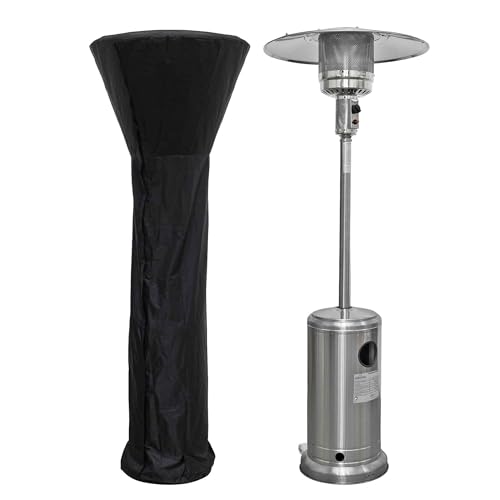A Peek Into Patio Heating's Secrets Of Patio Heating
Buying Gas Radiant Heaters: A Comprehensive Guide
Gas radiant heaters have acquired popularity in current years for their performance and ability to supply instantaneous warmth. As more house owners and companies look for ways to keep their areas comfy, understanding the features, advantages, and factors to consider when acquiring these heating units can be extremely helpful. This article looks into the complexities of gas radiant heaters, assisting possible purchasers in making notified decisions.
What are Gas Radiant Heaters?
Gas radiant heaters are devices that make use of propane or natural gas to give off heat straight into a room. Rather than heating Gas Patio Heaters Uk , they warm things and people in their area, offering convenience faster and effectively. These heaters are popular for both indoor and outdoor settings due to their versatility and effectiveness.
Key Features of Gas Radiant Heaters
- Direct Heating: Unlike standard heaters that warm the air, gas radiant heaters provide direct heat, making them an efficient choice for rapidly heating up areas.
- Portability: Many models are offered as portable systems, allowing them to be quickly moved from one area to another.
- Fuel Variety: Gas radiant heaters can be powered by natural gas or propane, providing users versatility based upon accessibility and choice.
- Adjustable Settings: Most gas radiant heaters included adjustable heat settings, enabling users to tailor the level of warmth based upon their needs.
Benefits of Gas Radiant Heaters
- Energy Efficiency: These heaters convert gas into heat efficiently, leading to lower energy bills compared to electric heaters.
- Quick Heating: Radiant heat is felt practically right away, making these heaters perfect for sudden temperature drops.
- Low Maintenance: Gas radiant heaters generally require less maintenance than electrical models, making them a problem-free alternative.
- Environmentally Friendly: When powered by tidy natural gas, these heaters can be a more ecologically sustainable choice compared to other heating techniques.
Types of Gas Radiant Heaters
When it concerns picking a gas radiant heater, it's necessary to comprehend the various types available. Below are the most typical options:
- Indoor Gas Radiant Heaters: Designed for indoor spaces, these heaters are normally vented or unvented and often featured built-in security functions.
- Outdoor Gas Radiant Heaters: Commonly utilized in outdoor patios or outdoor dining areas, these heaters are created to endure the components.
- Wall-Mounted Gas Radiant Heaters: A space-saving option, these systems are perfect for smaller spaces and can be equipped with various heat outputs depending upon the location's requirements.
- Freestanding Gas Radiant Heaters: These portable models can be utilized in numerous locations, perfect for those who need versatility.
Purchasing Guide: How to Choose the Right Gas Radiant Heater
When acquiring a gas radiant heater, a number of elements need to be considered to ensure you choose the ideal design for your space:
1. Heating Capacity
- Measured in BTUs (British Thermal Units), the heater's capacity identifies how much location it can successfully warm. Purchasers need to assess their particular requirements based on room size.
Space Size (sq ft)
Recommended BTUs (for Gas Radiant Heaters)
100 – 200
5,000 – 10,000 BTUs
200 – 400
10,000 – 20,000 BTUs
400 – 600
20,000 – 30,000 BTUs
600 – 800
30,000+ BTUs
2. Type of Gas
- Consider whether you will be utilizing propane or natural gas, as different heaters deal with various fuel types.
3. Security Features
- Look for designs geared up with safety features such as automatic shut-off valves, tip-over defense, and oxygen deficiency sensing units.
4. Setup Requirements
- Some heaters might require expert setup, particularly vented designs. Make sure to think about the expenses and requirements associated with installation.
5. Portability
- If versatility is vital, think about portable designs that can be easily moved from one place to another.
Setup and Maintenance
Gas radiant heaters are typically simple to install, specifically portable models. Nevertheless, vented options might demand professional installation to guarantee they fulfill local safety codes.
Maintenance generally includes:
- Regular cleansing to prevent dust accumulation.
- Examining gas connections and fittings for leaks.
- Guaranteeing safety functions are functional.
Idea: Regular checks around the system can help extend its life-span and maintain security.
Often Asked Questions (FAQs)
Q1: Are gas radiant heaters safe for indoor use?A1: Yes
, as long as they are effectively vented and equipped with needed safety features, they can be safely utilized inside.
**Q2: Can gas radiant heaters be utilized in enclosed spaces?A2: Unvented gas heaters can present dangers in enclosed areas due to possible suffocation or carbon monoxide gas buildup. Constantly make sure adequate ventilation. Q3: How do I understand what size heater I need?A3: The suitable size depends upon the location you mean to heat. Refer to the BTU chart
above to identify your requirements. Q4: What is the distinction between propane and gas heaters?A4: The primary difference lies in their energy source
**; propane is provided by means of tanks, while gas is usually piped into homes. Q5: How can I optimize efficiency?A5: Ensure the heater is appropriately sized for your space, maintain it regularly, and consider utilizing it in mix
**with other heating methods for optimum convenience. Gas radiant heaters can be a great addition to any home or service, offering energy-efficient and fast heating solutions. By comprehending the various types, features, and considerations
when acquiring, purchasers can make educated choices that fulfill their heating requires. With the ideal option, these heaters provide comfort, dependability, and an inviting environment during chillier seasons.  ******
******